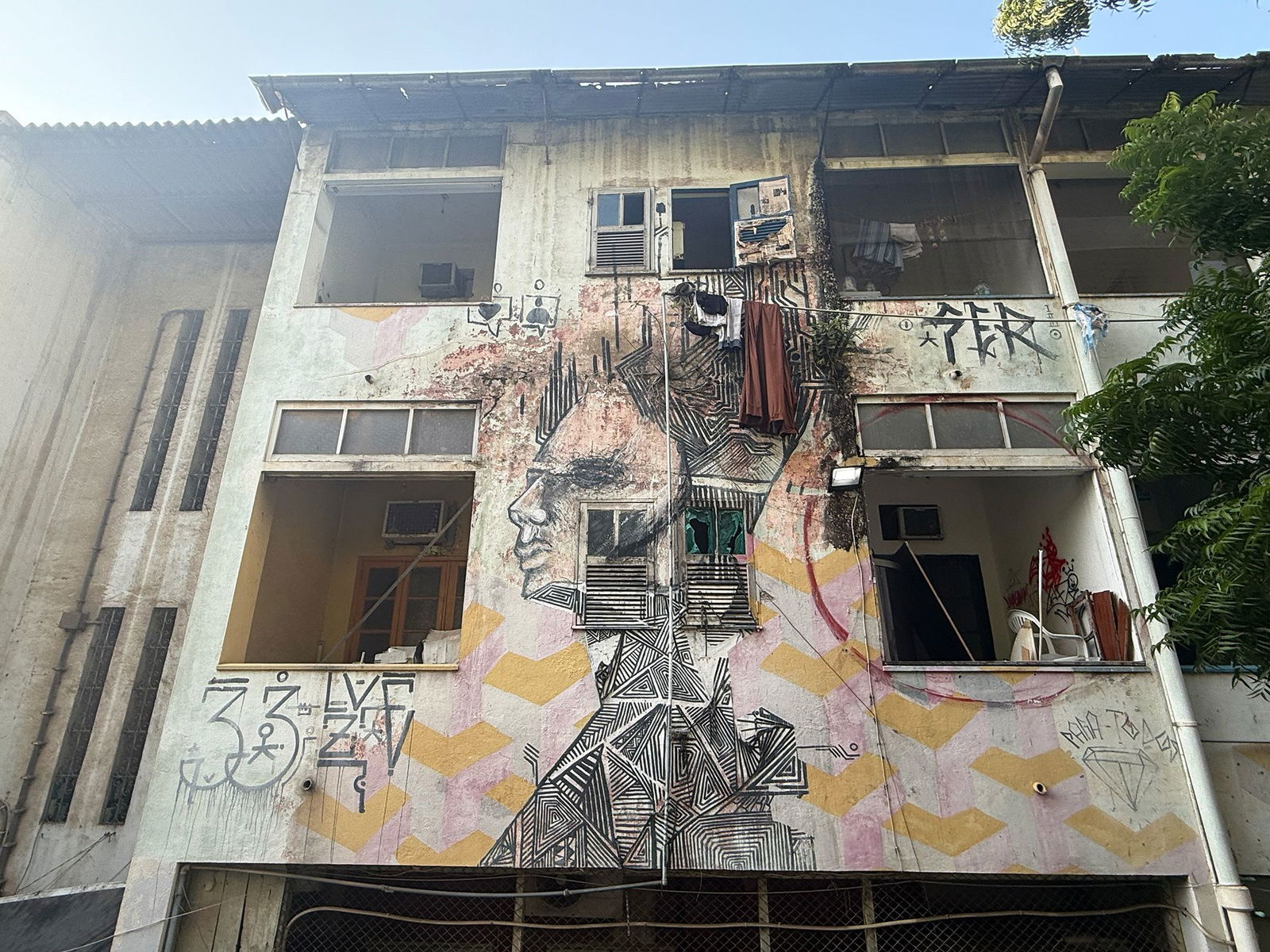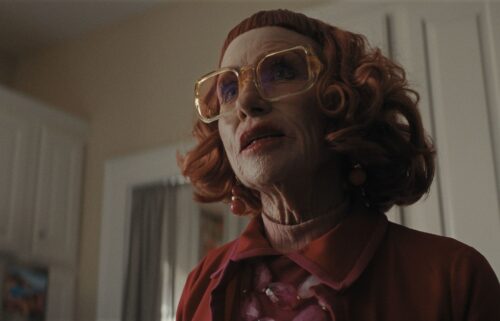How a forgotten hotel is helping transform one of Africa’s most expensive cities

The Globo is one of several unusual spaces in the city now promoting art.
By Griffin Shea, CNN
Luanda (CNN) — The Globo hotel in downtown Luanda hasn’t welcomed guests in ages. The sign and its awnings fell down long ago. Windows are broken. Cracks in the walls are big enough to support plant life.
Half a century ago, it was a different scene. The newly opened Globo was one of the city’s hippest places to stay. Its clean lines and smooth stucco walls were a standout at a time when modernism was starting to shake up the city’s centuries-old Portuguese colonial architecture.
Given its current appearance, those glory days are clearly gone. Luanda’s upscale hotel scene, fueled by the oil money that has made the city one of Africa’s most expensive, has moved into the glass tower blocks near the waterfront.
And yet the Globo has emerged once again as one of Luanda’s most happening destinations — becoming a force for transformation in a city that is opening up to tourism after decades of sequestration.
Today, the old hotel suites are filled. Not with tourists, but with artists, who have turned its vacant spaces into studios, galleries and performance spaces.
“It’s one of the most important places inside the center of the city,” said Ngoi Salucombo, who coordinates cultural programming for the Goethe Institut in Luanda. “If you want to find the new generation of artists — not all the people, of course, but some of the important people inside of the circle of the art — I think Globo is the place.”
Birth of a movement
The rebirth began a decade ago, when a group of artists slipped into the shuttered property to stage an underground event — an act unheard of decades earlier during Angola’s repressive years of revolution and civil war. It was so successful, they kept staging it and turned it into a documentary film. Some of the artists took up residence full-time.
Almost every corner has been transformed. Irene A’mosi and Débora Sandjai Leonor cleared out the hotel’s former laundry into a home for their Studio Ndako2.4.4. Ndako means “house” in Kikongo, one of Angola’s more than 40 languages. They filled it with books, paints and canvases, along with a collection of colourful rodilhas. These circles of cloth in African prints are rolled into thick circles, traditionally used by women in Luanda as a cushion when they carry buckets of their wares on their heads.
For A’mosi, the Globo allowed them to create a space focused on women and women artists.
“Débora and I developed a space where women find a way to develop a program that can help us work. In the previous generation, more men than women were making art. Women had to make a lot of sacrifices along the way if they wanted to practice art,” she said.
Globo gave a spark to Luanda’s art scene, igniting spaces that visitors can now discover across the city.
Mehak Vieira started JAHMEK Contemporary Art to represent Angolan artists, landing spots at globally prestigious fairs like Art Basel. She has a gallery at Globo, but she’s also curating spaces like the Sky One Gallery, in one of the office towers that now dot the city center.
“It’s this moment that we’re actually creating the spaces for these artists to occupy,” she said.
Hidden spaces
Leave the towers behind and head into Cazenga, one of Luanda’s sprawling neighborhoods, and you might come across Anim’art, a community program Vieira works with. It provides afterschool arts education — something most schools can’t provide.
Vieira brings artists like Wyssolela Moreira to exhibit inside Anim’art’s two centers, drawing the arts crowd into areas rarely visited by gallery-goers. Moreira’s studio is in Globo, and her current exhibit is at the Anim’art center in Cazenga.
“This is one of the most important shows I have done, and I have done a few. Because classism is a big issue here,” Moreira said.
“As contemporary artists, we understand art to be a tool for social reformation, social change. So, it’s important to be part of projects that will take the art to the hood,” she said.
In some of her work, she recreates ritual scarring on paper or fabric. In others, she digs into Angola’s precolonial past. That history stretches back more than five centuries, to when the Portuguese first landed in Africa.
Sometimes she sifts through written and visual archives, though some of those materials were destroyed or ferreted away to other countries. Other times she physically reconnects with spiritual or historic locations. Those connections reveal symbols that she incorporates into her work.
“I use natural pigments that are present in my spiritual practice. They’re used for healing ceremonies, rituals of passage,” she said. “Because they’re done by people that are initiated, they’re done by people that are in tune with the spirits that rule these practices. So it’s all a very intuitive work.”
“Globo is a good place for me to work from because it immerses me in one of the relevant artistic circuits that exist here in Luanda,” she said. “There aren’t many places that are dedicated to ‘making-space’ for artists. So, for there to be a place like Globo that welcomes artists with different practices and allows us to occupy space to create art and contribute to the contemporary art scene of the city is super important.”
Not all of Luanda’s art spaces announce themselves. Some hide in plain sight, tucked into mid-century blocks that look unchanged from colonial times but are slowly finding new purposes. On the upper floor of one of these buildings, Alexandra Goncalves set up a gallery and office for The Art Affair. She left a career in law to start the gallery.
“We feel that the Angolan art market needs more injection of players and investment and people traveling and showing the Angolan art,” she said. The walls are filled with photography, including a series of black and white images by Paula Agostinho, who went from Angola to Cap Verde where she followed a 10-year-old girl who stayed with her grandmother at the docks, hanging out with fishermen who softened their salty tones when she appeared.
Building bridges
Along the bay, upstairs from a hole-in-the-wall coffee bar, architect and photographer Rui Magalhães works in a studio that also houses a screen printer and a boutique for a local fashion designer.
He, too, is finding beauty in old spaces. HMagalhães transformed an old soap factory in Luanda into a community center, and has taken photos of an abandoned paper mill that seems almost like spaceship wreckage in Angola’s woodlands. He sees both as ways of preserving the country’s buildings while rethinking the colonial past.
“You have this way of conserving architecture through different interventions,” Magalhães said. “You can save a building and just try to give them the same image they had in the past. And I think photography is also a way of conserving the architecture.”
Dominick A Maia Tanner works to build bridges in other ways. New artists often start out selling their work informally, aiming at expats. He’s working to connect them to the more professionalized market, with efforts like the Africell Luanda Feira de Arte (Luanda Art Fair), in its second edition this year.
He’s also started a monthly Noite das Artes (Night of the Arts), when galleries open late and free transport is offered between them.
“Economically, they generate a ripple effect — benefiting local businesses and reinforcing the arts as a driver of urban development,” he said. “It ensures that the arts are not just admired occasionally, but integrated meaningfully into the fabric of everyday life and national development.”
In Luanda, art isn’t sealed behind the doors of museums. It spills from hotels, repurposed factories and hideaways above coffee bars. For travelers, wandering through these spaces is as much about exploring the city itself as about seeing the art — an invitation to witness how Angolan artists are remaking Luanda, one building at a time.
The-CNN-Wire
™ & © 2025 Cable News Network, Inc., a Warner Bros. Discovery Company. All rights reserved.


